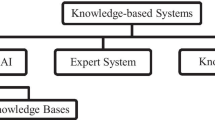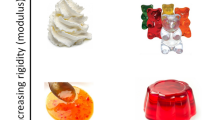Abstract
This research aimed to explore the relationship between internal attributes (pH and soluble solids content) of tea beverages and diffuse reflectance spectra. Three multivariate calibrations including least squares support vector machine regression (LSSVR), partial least squares (PLS), and radial basis function (RBF) neural network were adopted for development of internal attributes determination models. Ten kinds of tea beverages including green tea and black tea were selected for visible and near infrared reflectance (Vis/NIR) spectroscopy measurement from 325 to 1,075 nm. As regard the kernel function, least squares–support vector machine regression models were built with both linear and RBF kernel functions. Grid research and tenfold cross-validation procedures were adopted for optimization of LSSVR parameters. The generalization ability of LSSVR models were evaluated by adjusting the number of samples in the training set and testing set, and sensitive wavelengths that were closely correlated with the internal attributes were explored by analyzing the regression coefficients from linear LSSVR model. Excellent LSSVR models were built with r = 0.998, standard error of prediction (SEP) = 0.111, for pH and r = 0.997, SEP = 0.256, for soluble solids content, and it can be found that the LSSVR models outperformed the PLS and RBF neural network models with higher accuracy and lower error. Six individual sensitive wavelengths for pH were obtained, and the corresponding pH determination model was developed with r = 0.994, SEP = 0.173, based on these six wavelengths. The soluble solids content determination model was also developed with r = 0.977, SEP = 0.173, based on seven individual sensitive wavelengths. The above results proved that Vis/NIR spectroscopy could be used to measure the pH and soluble solids content in tea beverages nondestructively, and LSSVR was an effective arithmetic for multivariate calibration regression and sensitive wavelengths selection.







Similar content being viewed by others
References
Arana, I., Jaren, C., & Arazuri, S. (2005). Maturity, variety and origin determination in white grapes (Vitis vinifera L.) using near infrared reflectance technology. Journal of Near Infrared Spectroscopy, 13(6), 349–357.
Behrendt, A., Oberste, V., & Wetzel, W. E. (2002). Fluoride concentration and pH of iced tea products. Caries Research, 36(6), 405–410.
Borin, A., Ferrão, M. F., Mello, C., Maretto, D. A., & Poppi, R. J. (2006). Least-squares support vector machines and near infrared spectroscopy for quantification of common adulterants in powdered milk. Analytica Chimica Acta, 579(1), 25–32.
Cen, H. Y., Bao, Y. D., He, Y., & Sun, D. W. (2007). Visible and near infrared spectroscopy for rapid detection of citric and tartaric acids in orange juice. Journal of Food Engineering, 82(2), 253–260.
Chauchard, F., Cogdill, R., Roussel, S., Roger, J. M., & Bellon-Maurel, V. (2004). Application of LS-SVM to non-linear phenomena in NIR spectroscopy: Development of a robust and portable sensor for acidity prediction in grapes. Chemometrics and Intelligent Laboratory Systems, 71(2), 141–150.
Cherkassky, V., & Ma, Y. Q. (2004). Practical selection of SVM parameters and noise estimation for SVM regression. Neural Networks, 17(1), 113–126.
Cogdill, R. P., Schimleck, L. R., Jones, P. D., Peter, G. F., Daniels, R. F., & Clark, A. (2004). Estimation of the physical wood properties of Pinus taeda L. radial strips using least squares support vector machines. Journal of Near Infrared Spectroscopy, 12, 263–270.
Cozzolino, D., Murray, I., Paterson, R., & Scaife, J. R. (2004). Prediction of colour and pH in grapes using a diode array spectrophotometer (400–1100) nm. Journal of Near Infrared Spectroscopy, 12(2), 105–111.
Despagne, F., & Massart, D. L. (1998). Neural networks in multivariate calibration. Analyst, 123, 157R–178R.
Dmitrienko, S. G., Medvedeva, O. M., Ivanov, A. A., Shpigun, O. A., & Zolotov, Y. A. (2002). Determination of gallic acid with 4-nitrobenzenediazonium tetrafluoroborate by diffuse reflectance spectrometry on polyurethane foam. Analytica Chimica Acta, 469(2), 295–301.
Fearn, T. (2002). Assessing calibrations: SEP, RPD, RER and R2. NIR News, 13(6), 12–14.
Feldman, M., & Barnett, C. (1995). Relationships between the acidity and osmolality of popular beverages and reported postprandial heartburn. Gastroenterology, 108(1), 125–131.
Fernández, P. L., Pablos, F., Martín, M. J., & González, A. G. (2002). Multi-element analysis of tea beverages by inductively coupled plasma atomic emission spectrometry. Food Chemistry, 76(4), 483–489.
Ferruzzi, M. G., & Green, R. J. (2006). Analysis of catechins from milk–tea beverages by enzyme assisted extraction followed by high performance liquid chromatography. Food Chemistry, 99(3), 484–491.
Gomez, A. H., He, Y., & Pereira, A. G. (2006). Nondestructive measurement of acidity, soluble solids and firmness of Satsuma mandarin using Vis/NIR-spectroscopy technique. Journal of Food Engineering, 77(2), 313–319.
Haaland, D. M., & Thomas, E. V. (1988). Partial least-squares methods for spectral analyses. 1. Relation to other quantitative calibration methods and the extraction of qualitative information. Analytical Chemistry, 60(11), 1193–1202.
Lachenmeier, D. W. (2007). Rapid quality control of spirit drinks and beer using multivariate data analysis of Fourier transform infrared spectra. Food Chemistry, 101(2), 825–832.
Lammertyn, J., Nicolaï, B., Ooms, K., Smedt, V. D., & Baerdemaeker, J. D. (1998). Non-destructive measurement of acidity, soluble solids, and firmness of Jonagold apples using NIR-spectroscopy. Transactions of the ASAE, 41(6), 1089–1094.
Li, X. L., & He, Y. (2006). Non-destructive measurement of acidity of Chinese bayberry using Vis/NIRS techniques. European Food Research and Technology, 223(6), 731–736.
Li, X. L., He, Y., Wu, C. Q., & Sun, D. W. (2007a). Nondestructive measurement and fingerprint analysis of soluble solid content of tea soft drink based on Vis/NIR spectroscopy. Journal of Food Engineering, 82(3), 316–323.
Li, J. Z., Liu, H. X., Yao, X. J., Liu, M. C., & Hu, Z. D. (2007b). Quantitative structure–activity relationship study of acyl ureas as inhibitors of human liver glycogen phosphorylase using least squares support vector machines. Chemometrics and Intelligent Laboratory Systems, 87(2), 139–146.
Liu, F., He, Y., & Wang, L. (2008). Comparison of calibrations for the determination of soluble solids content and pH of rice vinegars using visible and short-wave near infrared spectroscopy. Analytica Chimica Acta, 610(2), 196–204.
Liu, F., He, Y., Wang, L., & Pan, H. M. (2007). Feasibility of the use of visible and near infrared spectroscopy to assess soluble solids content and pH of rice wines. Journal of Food Engineering, 83(3), 430–435.
McGlone, V. A., Jordan, R. B., & Martinsen, P. J. (2002). Vis/NIR estimation at harvest of pre- and post-storage quality indices for ‘Royal Gala’ apple. Postharvest Biology and Technology, 25(2), 135–144.
McGlone, V. A., & Kawano, S. (1998). Firmness, dry-matter and soluble-solids assessment of postharvest kiwifruit by NIR spectroscopy. Postharvest Biology and Technology, 13(2), 131–141.
Moros, J., Inon, F. A., Garrigues, S., & Guardia, M. D. (2005). Determination of the energetic value of fruit and milk-based beverages through partial-least-squares attenuated total reflectance–Fourier transform infrared spectrometry. Analytica Chimica Acta, 538(1–2), 181–193.
Naes, T., Isaksson, T., Fearn, T., & Davies, A. M. (2002). A user-friendly guide to multivariate calibration and classification. Chichester, UK: NIR.
Osborne, B. G., & Fearn, T. (1986). Applications of near infrared spectroscopy in food analysis. In B. G. Osborne, & T. Fearn (Eds.), Near infrared spectroscopy in food analysis. New York: Longman.
Peirs, A., Lammertyn, J., Ooms, K., & Nicolaï, B. M. (2000). Prediction of the optimal picking date of different apple cultivars by means of VIS/NIR-spectroscopy. Postharvest Biology and Technology, 21(2), 189–199.
Ribereau-Gayon, P., Glories, Y., Maujean, A., & Dubourdieu, D. (2000). In P. Ribereau-Gayon, Y. Glories, A. Maujean, & D. Dubourdieu (Eds.), Handbook of enology volume 2: The chemistry of wine stabilization and treatments. Chichester, UK: Wiley.
Rocchia, M., Rossi, A. M., & Zeppa, G. (2007). Determination of ethanol content in wine through a porous silicon oxide microcavity. Sensors and Actuators B, 123(1), 89–93.
Shao, Y. N., & He, Y. (2007). Nondestructive measurement of the internal quality of bayberry juice using Vis/NIR spectroscopy. Journal of Food Engineering, 79(3), 1015–1019.
Somers, C. (1998). The wine spectrum: An approach towards objective definition of wine quality. Adelaide: Winetitles.
Soriano, A., Pérez-Juan, P. M., Vicario, A., Gonzalez, J. M., & Pérez-Coello, M. S. (2007). Determination of anthocyanins in red wine using a newly developed method based on Fourier transform infrared spectroscopy. Food Chemistry, 104(3), 1295–1303.
Stark, E., Luchter, K., & Margoshes, M. (1986). Near-Infrared Analysis (NIRA): A technology for quantitative and qualitative analysis. Applied Spectroscopy Reviews, 22(4), 335–399.
Suykens, J. A. K., Gestel, T. V., Brabanter, J., De Moor, B. D., & Vandewalle, J. (2002). Least squares support vector machines. Singapore: World Scientific.
Suykens, J. A. K., & Vanderwalle, J. (1999). Least squares support vector machine classifiers. Neural Processing Letters, 9(3), 293–300.
Tahmassebi, J. F., Duggal, M. S., Malik-Kotru, G., & Curzon, M. E. J. (2006). Soft drinks and dental health: A review of the current literature. Journal of Dentistry, 34(1), 2–11.
Vapnik, V. (1998). Statistical learning theory. New York: Wiley.
Williams, P. C., & Norris, K. H. (1987). Near-Infrared technology in the agricultural and food industries. In P. C. Williams, & K. H. Norris (Eds.), Near-Infrared technology in the agricultural and food industries. St. Paul, MN: American Association of Cereal Chemists.
Zhao, C. Y., Zhang, H. X., Zhang, X. Y., Liu, M. C., Hu, Z. D., & Fan, B. T. (2006). Application of support vector machine (SVM) for prediction toxic activity of different data sets. Toxicology, 217(2–3), 105–119.
Acknowledgments
This study was supported by the Teaching and Research Award Program for Outstanding Young Teachers in Higher Education Institutions of MOE, People’s Republic of China, Natural Science Foundation of China (Project no. 30270773), and Specialized Research Fund for the Doctoral Program of Higher Education (Project no. 20040335034).
Author information
Authors and Affiliations
Corresponding author
Rights and permissions
About this article
Cite this article
Li, Xl., He, Y. Evaluation of Least Squares Support Vector Machine Regression and other Multivariate Calibrations in Determination of Internal Attributes of Tea Beverages. Food Bioprocess Technol 3, 651–661 (2010). https://doi.org/10.1007/s11947-008-0101-y
Received:
Accepted:
Published:
Issue Date:
DOI: https://doi.org/10.1007/s11947-008-0101-y




